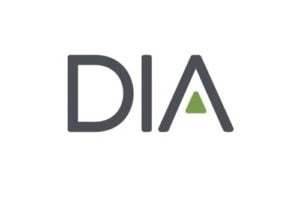Writing in the March 2022 edition of DIA’s Global Forum magazine, Ananya Chakraborty from the Vydehi Institute of Medical Sciences & Research Centre outlines the key factors behind India’s successful COVID-19 vaccination program.
January 16, 2022, was a proud day for India. The country achieved the milestone of completing one year of the world’s largest vaccine drive and celebrated delivering 1.56 billion COVID-19 vaccine doses in the previous year. The health ministry reported upon the completion of this year-long drive that most adults (93%) had received their first COVID-19 vaccine dose, and more than 77% of the adult population had been fully vaccinated. More than half (52%) of children in the permissible age group (15 to 18 years) have received their first dose. One might wonder: How did India do it?
It started with the planning at a national level. The challenges included developing an effective vaccine (R&D), deploying production to distribution (requiring effective collaboration and communication among stakeholders from the pharmaceutical industry and setup facilities), prioritization, administration, and most importantly: trust, confidence, and acceptance from beneficiaries. How did India overcome these challenges?
Scientific and epidemiological evidence, WHO guidelines, and global best practices built the framework. The vaccination program incorporated recommendations from experts in the field of immunization, public health, disease control, and information technology, and was supported by the United Nations Development Programme (UNDP). Various stakeholders proactively strengthened this program, and the government of India set up expert groups to plan and oversee various aspects:
- A task force headed by the Principal Scientific Adviser to the Government of India was created to encourage domestic R&D of COVID-19 drugs, diagnostics, and vaccines.
- The National Expert Group on Vaccine Administration for COVID-19 (NEGVAC) was constituted to formulate a comprehensive action plan for vaccine administration. It was co-chaired by the National Institution for Transforming India Aayog (NITI Aayog), the apex public policy think tank of the Government of India, and Union health secretary.
- Committees were formed, under the umbrella of NEGVAC, at the state level (State Steering Committee, State Task Force, State Control Room), district level (District Task Force, Urban Task Force, District/Municipal Control Room), and block level (Block Task Force, Block Control Room).
- The central government also set up an empowered group on COVID-19 vaccine administration to facilitate optimal utilization of technology to make COVID-19 vaccination all-inclusive, transparent, simple, and scalable.
What other factors led to the success of India’s vaccination program?
1. Public-private partnership
The first indigenous vaccine was a result of public-private partnership. The vaccine was developed following the successful isolation of the SARS CoV-2 virus at the Indian Council of Medical Research (ICMR)-National Institute of Virology (NIV). ICMR entered into a public-private partnership with Bharat Biotech International Limited (BBIL) to develop the isolated virus into an effective vaccine candidate. Completing development in less than eight months was possible due to teamwork between various stakeholders and expedited approvals from regulatory authorities. The vaccine was developed on the WHO pre-qualified Vero cell platform. Pre-clinical studies were conducted on small animals, hamsters, and rhesus macaques. Phase 1 and phase 2 clinical trials, conducted in 755 participants, demonstrated the candidate vaccine’s high safety profile, with seroconversion rates of 98.3% and 81.1% on days 56 and 104, respectively. Preliminary phase 3 trial results have demonstrated an 81% efficacy rate. The phase 3 trial studied 25,800 volunteers across 25 sites in India. Thus, it is India’s largest clinical trial of a COVID-19 vaccine ever conducted.
2. Integrated platform for vaccine supplies and storage
Identifying beneficiaries and a vaccine distribution network were made possible by the electronic Vaccine Intelligence Network (eVIN) in India. eVIN is an indigenously developed technology that digitizes vaccine stockpiles and monitors the temperature of the cold chain through a smartphone application. It was first launched in the country in 2015 and fortunately provided a ready-made stable platform. In association with the UNDP, eVIN helped maintain an error-free record of vaccine supplies and storage. UNDP also helped set up well-trained human resources, efficient functional and operational guidelines, and a system to check and resolve ground-level issues. This ensured adoption, adherence, and coordination across stakeholders in every state and union territory.
3. Communication strategy
Communication strategy, based on the learnings of previous national immunization campaigns (Mission Indradhanush/Intensified Mission Indradhanush/Measles Rubella), was another important aspect of this successful vaccination program. The communication strategy had five key elements: advocacy packages, capacity building, media engagement, community engagement, and standard operating procedures for Adverse Events Following Immunization (AEFI) crisis management and communication.
A National Media Rapid Response Cell (NMRRC) was established to capture the pulse of discussions about vaccines and their safety across India. NMRRC extensively and constantly monitored topics (and rumors) related to vaccine eagerness, vaccine hesitancy, and any misreporting or false information regarding vaccination. Vaccine advocacy packages included printed leaflets and factsheets; interviews, discussions, and opinion pieces by scientific experts and other credible voices; and multimedia materials, all translated into specific local languages.



